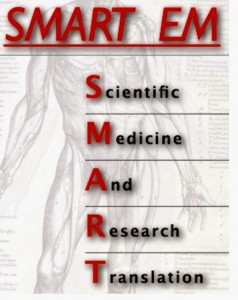talk one – the futility of the exercise tolerance test . The goal is to squeeze all this information into two ten minute talks
see the following links for all the information you need (you may want to glance at some of the references )
talk two – universal definition of MI / ECG criteria for STEMI including scarbossa dewinter posterior and right ventricular infarct and the significance of STE in AVR (ten minutes ).see the following links
talk three – MI Mimics ( on ECG) BER / ANEURISM / SAH / Dissection prox aorta / Pericarditis .
talk 4 – unstable angina – time for a requiem ?
talk 5 – regional wall abnormality on bedside echo -mick – if time








for Mick Killeens talk on the Utility of the ETT see link to Emcrit on blog page
below is the one paragraph summary
THE ETT (or equivalent provocation test) adds virtually nothing to predicting future risk in low risk chest pain patients in the Emergency Department
THE ETT in medium/moderate risk patients adds virtually nothing if their hs Tn and ECGs are normal .
If this second group get a revascularisation procedure, it is unlikely to benefit them and may infact harm them
We should be doing far less ETTs and focussing more on medical management / community follow up and life style modification as these are the treatments that will improve survival
THE LINK TO PPT ‘ UTILITY OF ETT IN 2014 ‘ HERE
https://www.icloud.com/iw/#keynote/BALMcIm10ZPMshS3u-CBwsKVaEQfwlJxaraF/The_Futility_of_the_ETT_2014
Some things you didn’t know about STEMI.
Diagnosis (European Society of cardiology)
IN A MALE < 40 : STE of > 2.5 mm in anterior v1-v3 or > 1 mm STE in other leads
IN A MALE >40: STE of > 2 mm in anterior and 1 mm in other
IN A FEMALE ANY AGE > 1.5 mm in anterior and 1 mm other
Subsets
Posterior MI also an indication for intervention / thrombolysis
Leads 789 and only half a mm or 0.5 mm STE . Also represented by st depression in leads v1/2 and dominant R in the same leads ( 0.5 mm) . This represents left circumflex disease/ infarction
Left main coronary obstruction
Ie: main stem disease ( needs a CABG not thrombolysis)
STE in AVR ( or v1) with diffuse changes ( st depression ) in 8 or more other leads
See reference ECS
http://www.escardio.org/guidelines-surveys/esc-guidelines/GuidelinesDocuments/Guidelines_AMI_STEMI.pdf
De Winters st depression ( check litfl)
St depression , coved upward sloping to peaked t waves in precordial leads – highly suggestive of imminent lad occlusion
Wellens warning( also check LITFL)
1 . Deep TWI in precordial leads in a patient with RESOLVED cp and TNI may not be raised . Suggest imminent lad occlusion needs PCI now . The other variant is biphasic t waves in the same leads ( initially positive then negative in precordial leads occurs 25 percent of the time )